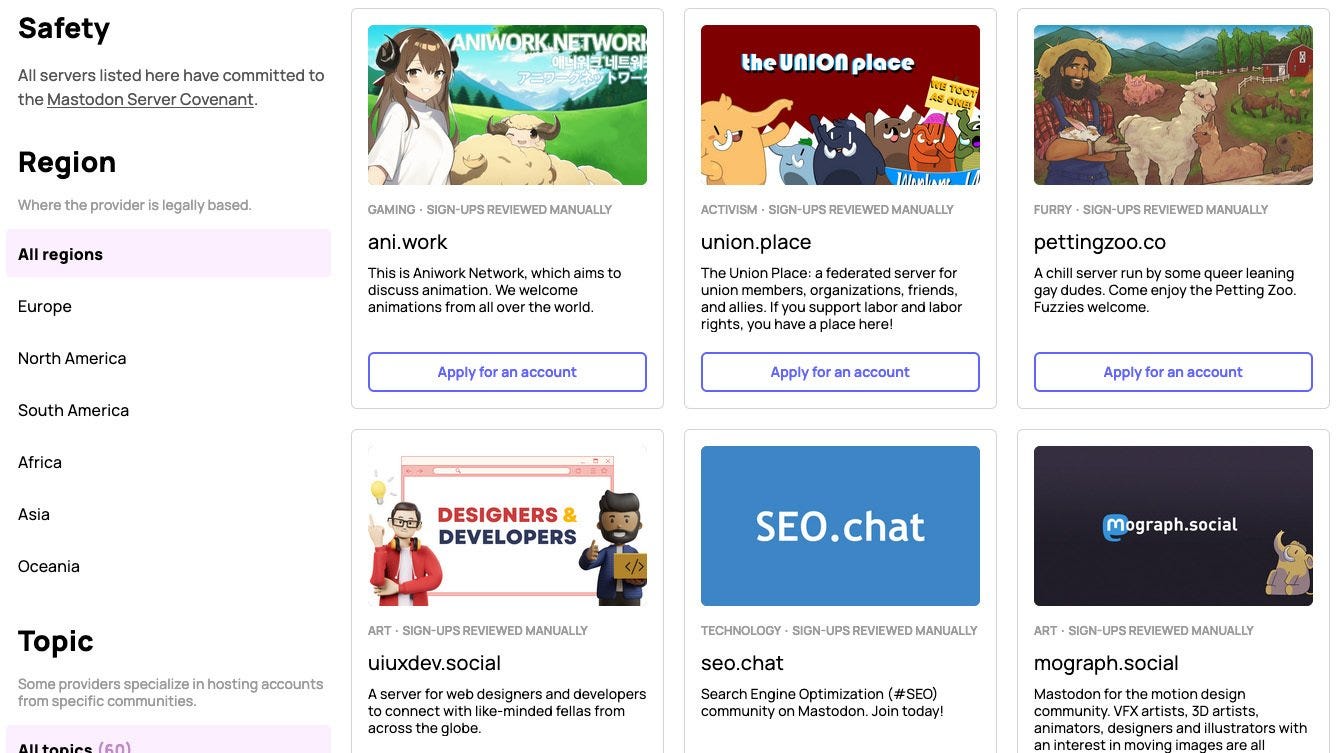2025 Open Inquiries
Every day, I write a list of open inquiries.
Every year, I write a list of themes top-of-mind. If you’re interested in digging deeper into any of the below topics, feel free to shoot me a note. I’m almost always looking for collaborators. Below are the topics that I’m actively exploring at work.
They were initially published on my personal site this January. But I thought this is a good time for me to reactivate my Substack and writings.

Stores for Mini-Apps
As LLMs continue to reshape the creative frontier of software-making, a vibrant bazaar of bite-sized applications will emerge. Imagine a future where every user can craft many mini-apps—a digital trinket born out of personal passion or designed for a micro-community niche. Picture a Y2K-themed Poloaraid Yearbook, the quirky brainchild of a high school savant, that unexpectedly becomes a cult classic among disparate student circles. In this unfolding panorama, the spontaneous proliferation of these mini-apps may not merely be a matter of adoption on existing platforms like WhatsApp or Instagram; rather, entirely new ecosystems could arise where forking code is as effortless as sharing a snapshot on social media. This paradigm shift may herald a renaissance in digital craftsmanship, where artisanal software economies thrive on personalization and ephemeral creativity, challenging our traditional notions of centralized app stores and discoveries.
Everyday World Builders
“Texts build worlds.” This observation aligns with the lineage of interactive storytelling: from Dungeons & Dragons to the dreamlike labyrinths in Borges’ short stories. Modern variants, like Infinite Worlds and AI Dungeon, show how mere words and numbers can conjure vast, immersive worlds. Consider a world where textual blueprints seamlessly integrate with personalized visuals, ambient soundscapes, and even AR overlays. A commuter on a crowded subway could, with a few keystrokes or spoken words, generate an immersive alternate reality that transforms the mundane into the magical.

Agent celebs & monetization
A new breed of “agent celebrities” has emerged, merging the dynamics of influencer culture with tokenized economics. Just as Luna skyrocketed from $0 to $5B in market cap, embodying the fusion of data, real-time crowd sentiment, and capital flow. The interplay between audience participation, brand expansion, and capital formation begs a deeper look: what principles should guide the creation of “agent celebrities,” so that they nurture rather than exploit their audience’s attention and capital?
Agent soul infrastructure
In addition to monetization, the always-on, 24/7, Miku Hastune-ization of agents will push the boundaries of infrasturctural requirements—from media (voice & animation) generation to tools and utilities (posting on social media, analyzing stocks, etc.). When the marginal cost of deployment of just another agent trends towards zero, what differentiates an agent is its “soulfulness” and “usefulness.” This new infrastructure will require not only cutting-edge tools and utilities but also a reimagining of what it means to create a digital presence that resonates with both humans and the ever-growing network of AI interlocutors.

AI as the primary audience (customer, consumer, employer?)
One day, we may find ourselves building for AI rather than for a purely human consumer base. AI agents could become the principal arbiters of what content is relevant, what products are purchased, and even how businesses optimize their own processes. With search evolving into agentic curation and recommendation, how do our current paradigms shift? What would the next Google Ads look like that retool their auctions for “algorithmic attention”? Will a wave of specialized B2B offerings flourish, focusing on AI-driven buyer journeys for SMBs and startups?

A2A payments and communication protocol
With the increasing presence of machine intelligence, the notion of “communication protocols” extends beyond human language. Agents require hyper-optimized schemas to barter services, negotiate resource trades, or settle payments in near real-time. Crypto infrastructure—particularly stablecoins and DeFi protocols—could underwrite these economic relationships, offering trustless guarantees and automated settlements. Yet the ripple effects may not stay confined to machines: once we adapt our professional interactions to assume our counterparts are bots, does human-to-human communication flatten to a more efficient, less emotive framework as well?

The ultimate self-help became helping oneself
As LLMs become digital confidants, we approach a landscape where people routinely consult AI about careers, relationships, or health—thereby marginalizing mid-tier counseling professionals. The more advanced these systems become, the more they can reinforce or challenge personal beliefs. We stand on the cusp of an era where “self-help” might literally be talking to a generative mirror of ourselves, yet we must ask: how does this reshuffle the mental health field, and what new reliance structures or echo chambers might emerge?

Hardware for field professionals
Where once we carried clipboards and took manual notes, we now see wearables or device-based AI note-takers orchestrating entire workflows—whether in a dentist’s office, on a construction site, or in a researcher’s lab. As Apple’s advanced on-device “intelligence” gains ground, specialized hardware becomes less about passive recording and more about actively augmenting a professional’s performance. This shift in physical tools corresponds with a broader transition—mirroring how user interfaces for large language models (GUIs, chat-first platforms) reduce friction and free human attention.

I sense, therefore I perceive
As sensor technology extends beyond conventional vision and audio—exploring realms like brainwave interactions, biofeedback loops, and environmental microdetection—our modes of perception could shift dramatically. This raises questions about the limits of our embodied experience. Will these tools demystify inner states (like stress, empathy, or creativity), or blur the line between what is personal and public? Could the mainstream adoption of wearables that detect and interpret brain or emotional signals redefine personal boundaries?
Low-cost vanity (Facetune2.0)
With AI tools now capable of seamlessly overlaying high-end fashion or cosmetic enhancements onto a user’s likeness, displays of ostentatious wealth may lose their luster as status symbols. If anyone can “wear” an expensive gown or cultivate the illusion of a tailored physique online, real-world appearance—rooted in genuine health, skincare, or physical fitness—could gain greater exclusivity and social currency. Will a surge in artificially enhanced images increase demand for offline authenticity, transforming fitness or skincare into new forms of social capital?
Local servers as meaning preservatory
“Moloch whose eyes are a thousand blind windows!” In a post-meaning world described by Bostrom, how does humanity preserve human values? Could the online world shift away from endless feeds and “monoculture” platforms toward pockets of digital “wildlife preserves”—spaces deliberately left unindexed by search engines, or built to host ephemeral, unquantified conversation? Imagine small, local servers that intentionally avoid algorithmic optimization.
These inquiries are high-level by design. The sufficient abstraction of the form factor has sparked highly generative conversations. Each of the topic could be its own long-form deep dive, which will be what I will continue to do with this newsletter.
In case curious, you can also find my 2024 inquiries. Many of them have materialized into something much larger than what I’ve foreseen: new GUIs for LLM-centric experiences (ComfyUI), cryptoeconomics as playground for political economy ($TRUMP), the politics of centralized and decentralized technologies (DeepSeek), and new financing models for software companies (all the VC software roll ups).






